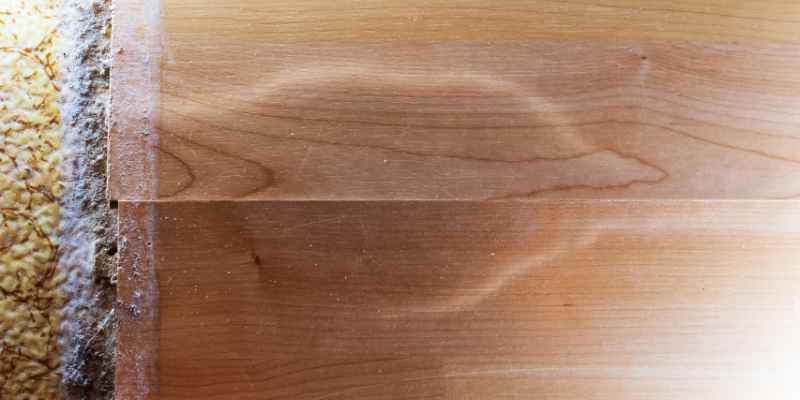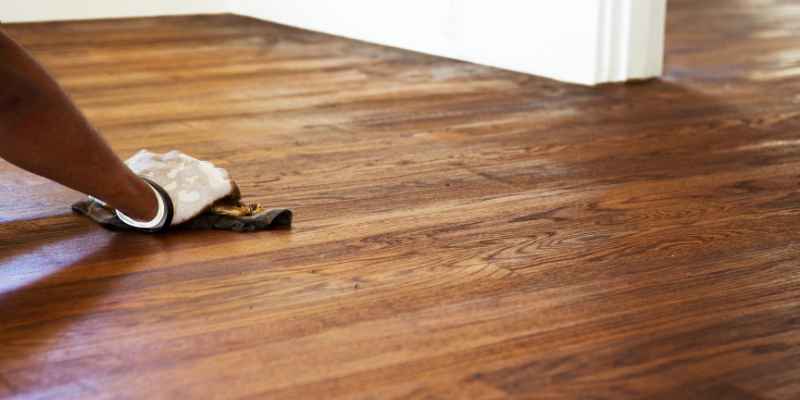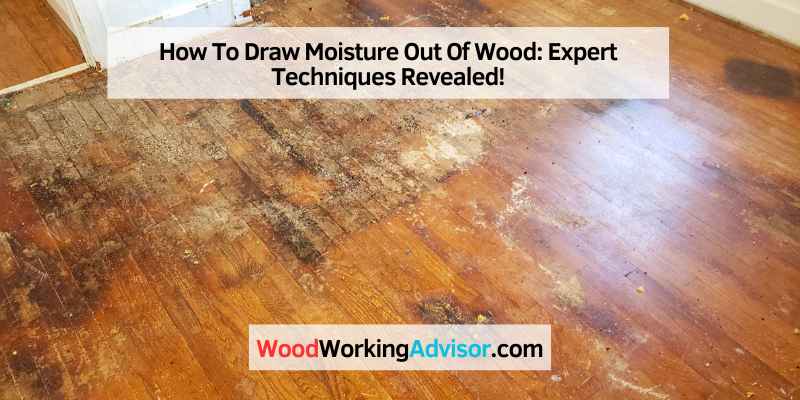To draw moisture out of wood, use a dehumidifier or place the wood in a dry, well-ventilated area. Wood is a durable and versatile material used in various applications, but it is prone to moisture absorption, which can lead to warping, cracking, and decay.
If you have recently encountered excessive moisture in your wooden furniture, flooring, or any other wooden item, it is important to take immediate action to remove the moisture. This article will guide you through effective methods to draw moisture out of wood, ensuring its longevity and preventing any structural damage.
By following these steps, you can successfully restore the moisture balance and retain the quality of your wood. Whether you are dealing with a small wooden item or a larger structure, these techniques will help you effectively dry out the wood and prevent any further moisture-related issues.
Understanding Moisture In Wood
Understanding moisture in wood is crucial for preventing damage and degradation. Learn effective methods to draw moisture out of wood and preserve its longevity.
Moisture is a common enemy of wood. It can cause a myriad of problems if not dealt with properly. In this section, we will delve into the importance of removing moisture from wood and the effects of excess moisture on wood.
The Importance Of Removing Moisture From Wood
It is crucial to remove moisture from wood to prevent damage and maintain the integrity of the material. By doing so, you can extend the lifespan of your wooden items and ensure they remain structurally sound.
Here are some key reasons why removing moisture is essential:
1. Preventing Warping and Shrinkage: When wood absorbs moisture, it expands, leading to warping and distortion. On the other hand, when wood loses moisture, it shrinks, causing cracks and gaps. By removing moisture, you can preserve the original shape and dimensions of your wood.
2. Avoiding Mold and Rot: Excess moisture provides a breeding ground for mold and rot. These fungal infestations can not only mar the aesthetic appeal of your wooden surfaces but also weaken their structural integrity. Removing moisture helps deter the growth of mold and protects your wood from decay.
3. Enhancing Strength and Durability: Moisture weakens the internal bonds of wood fibers, compromising its strength. Removing moisture allows the wood to regain its inherent strength and durability, ensuring its longevity.
Effects Of Excess Moisture On Wood
Excess moisture can wreak havoc on wood, causing various detrimental effects that can be both visible and hidden:
1. Discoloration and Staining: When water penetrates the wood, it can leave unsightly stains and discoloration. These blemishes not only mar the appearance of the wood but also lessen its market value.
2. Decay and Rot: High moisture content in wood provides an ideal environment for bacteria and fungi to thrive. This can lead to wood decay, compromising its structural integrity and potentially rendering it useless.
3. Musty Odor: Moisture trapped within wood can result in a musty odor, which can be unpleasant and difficult to eliminate. This odor can permeate the surrounding area and affect the overall ambiance.
4. Increased Weight: Waterlogged wood becomes heavier, which can pose challenges when using or transporting wooden items. Removing excess moisture helps maintain the wood’s original weight, making it easier to handle.
5. Difficulty in Finishing: Moisture-laden wood can be challenging to finish or paint. The excess moisture prevents proper adhesion of coatings, resulting in a subpar finish. Removing moisture allows for a smoother and more successful finishing process.
By understanding the significance of removing moisture from wood and being aware of the detrimental effects of excess moisture, you can take proactive measures to preserve the quality and longevity of your wooden items.

Common Methods For Drawing Moisture Out Of Wood
Drawing moisture out of wood is an important process to prevent issues such as warping, cracking, and decay. There are several common methods for removing moisture from wood, each offering its own advantages. In this article, we will discuss air drying, heat drying, and dehumidification as effective ways to draw moisture out of wood.
Air Drying
Air drying is one of the oldest and most traditional methods for drawing moisture out of wood. It involves exposing the wood to natural air circulation, allowing moisture to evaporate over time. This method is suitable for small projects and in situations where time is not a constraint.
Air drying wood requires a well-ventilated area, preferably outdoors or in a room with open windows. The wood should be stacked with spacers between each piece to ensure proper air circulation. It’s important to place the stack in a location where it is protected from direct sunlight and rain, as excessive heat or moisture can affect the drying process.
The duration of air drying depends on various factors such as wood species, thickness, and humidity levels. Typically, it can take several months for the wood to reach the desired moisture content. Regular monitoring of the moisture levels using a moisture meter is crucial to determine when the wood is dry enough for use.
Heat Drying
Heat drying is a method that involves applying controlled heat to accelerate the evaporation of moisture from wood. This method reduces the drying time considerably compared to air drying. Heat drying is commonly used in commercial settings or for larger wood projects where time is a constraint.
There are two main approaches to heat drying: kiln drying and microwave drying. Kiln drying involves using a specialized kiln to control temperature, humidity, and air circulation. This method ensures consistent and controlled drying, allowing the wood to reach the desired moisture content efficiently.
Microwave drying, on the other hand, uses microwave energy to generate heat within the wood, rapidly drawing out moisture. While this method can be faster than kiln drying, it requires specialized equipment and careful monitoring to prevent overheating and damage to the wood.
Dehumidification
Dehumidification is a method that involves using dehumidifiers to remove moisture from the air, effectively drawing out moisture from wood. This method is particularly useful in humid environments where air drying may not be feasible or efficient.
The process involves placing the wood in an enclosed space along with dehumidifiers. The dehumidifiers extract moisture from the air, creating a dry environment that encourages the wood to release its moisture. This method is efficient and can significantly reduce the drying time compared to air drying.
It’s important to note that dehumidification requires careful monitoring of humidity levels and the use of proper ventilation to prevent a buildup of moisture in the drying space. Regular checking of the wood’s moisture content is necessary to ensure it reaches the desired level before further processing or use.
Expert Techniques For Removing Moisture From Wood
When it comes to working with wood, moisture control is essential. Excess moisture in wood can lead to warping, cracking, and even mold growth. That’s why it’s important to understand expert techniques for removing moisture from wood. By following these methods, you can ensure the longevity and quality of your wooden projects.
Using Moisture Meters To Determine Wood Moisture Content
One effective technique for removing moisture from wood is the use of moisture meters. These handy devices allow you to measure the moisture content of your wood accurately. By inserting the pins of the moisture meter into the wood, you can get an instant reading.
Moisture meters use electrical resistance to determine the moisture content of the wood. The pins act as conductors, and the resistant electrical current is measured. This reading is then displayed on the meter, giving you valuable information about the level of moisture in the wood.
Based on the moisture content reading, you can decide how to proceed with the drying process. If the reading indicates a high moisture level, taking steps to remove moisture is necessary. Proper drying techniques can prevent damage and ensure the longevity of your wood projects.
Proper Stacking And Ventilation Techniques
Proper stacking and ventilation of wood is essential for removing moisture effectively. When drying wood, it is crucial to stack the pieces properly to allow air circulation. This ensures that moisture is evenly distributed and can evaporate more efficiently.
To stack your wood, create a stable, even base. Place the wood in a crisscross pattern, allowing space between each piece. This allows air to flow freely, encouraging moisture to escape. For larger quantities of wood, consider using supports or pallets to elevate the stack.
Adequate ventilation is another crucial factor in removing moisture from wood. Ensure that the drying area has proper airflow to prevent stagnation. This can be achieved by using fans or opening windows and doors to allow fresh air in.
Introducing Moisture-removal Agents
In some cases, using moisture-removal agents can help accelerate the drying process. These agents effectively absorb moisture from the wood, aiding in its removal. One commonly used agent is silica gel, which comes in small packets or crystals.
To use silica gel, place the packets or crystals alongside the wood that needs to be dried. The gel will attract moisture from the wood and trap it, reducing the overall moisture content. Periodically check the packets or crystals and replace them if they become saturated.
Other moisture-removal agents include cat litter, which can be spread on a tarp and used as a drying bed for small pieces of wood. Rice is also effective at absorbing moisture and can be placed in a container alongside the wood.
In conclusion, when it comes to removing moisture from wood, using moisture meters, implementing proper stacking and ventilation techniques, and utilizing moisture-removal agents can greatly assist in achieving dry and stable wood. By applying these expert techniques, you can ensure that your wood projects are of excellent quality and have a long lifespan.
Preventing Moisture Build-up In Wood
Wood can be susceptible to moisture build-up, but there are effective ways to draw out moisture. By using methods like air circulation, dehumidifiers, and proper storage, you can prevent moisture damage and preserve the quality of your wood.
Excessive moisture in wood can cause a range of issues, from warping and splitting to the growth of mold and mildew. To ensure the longevity and beauty of your wooden furniture, flooring, or other objects, it’s important to take preventive measures against moisture build-up. This can be accomplished through proper storage techniques, the application of sealants and finishes, and ensuring a well-ventilated environment. In this article, we will explore these methods in more detail.
How To Store Wood Properly
Proper storage is a crucial aspect of preventing moisture damage in wood. When it comes to storing wooden objects or building materials, follow these guidelines:
1. Keep wood off the ground: Elevating the wood using pallets or blocks helps to prevent moisture absorption from the ground, reducing the risk of swelling or rot.
2. Utilize a well-ventilated area: Good airflow is essential for keeping wood dry. Choose a storage location that allows air to circulate freely around the wood, minimizing the chance of moisture accumulation.
3. Avoid direct contact with concrete: Concrete can hold moisture, which can transfer to the wood. Place a moisture barrier, such as a plastic sheet or a layer of felt, between the wood and the concrete to prevent this potential damage.
4. Keep the wood away from high humidity areas: Areas such as basements or damp crawl spaces can expose wood to excess moisture. Opt for storing wood in a dry, climate-controlled space whenever possible.
Applying Sealants And Finishes To Protect Against Moisture
In addition to proper storage, the application of sealants and finishes can be highly effective in preventing moisture intrusion. These protective coatings act as a barrier, inhibiting water absorption and enhancing the wood’s resistance to moisture damage. Here are some key points to consider:
1. Choose the right product: Select a sealant or finish that is specifically designed for your type of wood and the intended use. Common options include polyurethane varnish, wood oils, and water-based sealants.
2. Prepare the surface: Before applying any protective coatings, ensure the wood surface is clean, dry, and free from dirt or old finishes. Sanding the wood gently helps the sealant or finish adhere better.
3. Follow the manufacturer’s instructions: Different sealants and finishes require specific application methods and drying times. Be sure to carefully read and follow the instructions provided by the manufacturer for optimum results.
4. Apply multiple coats: Applying multiple thin coats of sealant or finish is more effective than a single thick coat. Allow each coat to dry completely before applying the next one, ensuring complete coverage.
5. Regular maintenance: Over time, the protective layer applied to the wood can wear off. To maintain its effectiveness, periodically inspect the wood for signs of wear and apply additional coats of sealant or finish as needed.
By following these steps, you can significantly reduce the risk of moisture-related damage to your wood. Whether it’s a cherished antique piece or a new wooden construction project, taking preventative measures will help ensure its longevity and beauty. Remember, moisture prevention is key to keeping your wood in top condition.
Troubleshooting Moisture-related Wood Issues
Wood is a versatile and durable material, but it can be susceptible to moisture-related problems. Excessive moisture in wood can lead to warping, buckling, and even mold growth, compromising its structural integrity and aesthetics. Identifying signs of excess moisture in wood is crucial for prompt action. Addressing these issues promptly can help preserve the beauty and longevity of your wood products. In this article, we will discuss the key steps to troubleshoot moisture-related wood issues and restore your wood to its original condition.
Identifying Signs Of Excess Moisture In Wood
If you suspect that your wood may have excessive moisture, it is essential to be able to identify the signs of this problem. By recognizing the early warning signs, you can take appropriate action and prevent further damage. Here are some indicators that your wood may be affected by excess moisture:
- Visible water stains or discoloration on the surface of the wood.
- Unpleasant or musty odor coming from the wood.
- Softened or weakened wood structure.
- Presence of mold or mildew growth on the surface.
If you notice any of these signs, it’s important to act quickly to prevent further damage.
Addressing Warping, Buckling, And Mold Growth
Excess moisture in wood can lead to various issues, such as warping, buckling, and mold growth. These problems can not only compromise the appearance of your wood but also affect its functionality. Here are some steps you can take to address these moisture-related issues:
- 1. Remove the source of moisture: Identify and eliminate the source of excess moisture, such as a leak or high humidity.
- 2. Increase ventilation: Improve airflow around the affected wood by opening windows, using fans, or dehumidifiers to help dry out the wood.
- 3. Use a moisture meter: Use a moisture meter to assess the moisture content of the wood. This will help you determine the extent of the problem and monitor progress during the drying process.
- 4. Apply a drying agent: Use a drying agent like silica gel packets or dehumidifiers specifically designed for drying out wood. These agents help absorb moisture from the wood and speed up the drying process.
- 5. Sand and refinish: In cases of minor warping or buckling, sanding the affected area can help restore the wood’s shape. Afterward, apply a suitable wood finish to protect it from future moisture damage.
- 6. Consult a professional: If the wood damage is extensive or you’re unsure about how to proceed, it’s advisable to consult a professional who specializes in wood restoration.
By following these steps, you can effectively troubleshoot moisture-related wood issues and prevent further damage. Remember, taking immediate action is crucial to minimize the impact on your wood products. Regular maintenance and preventive measures can help keep your wood in optimal condition for years to come.

Frequently Asked Questions Of How To Draw Moisture Out Of Wood
Can Salt Draw Moisture Out Of Wood?
Yes, salt can draw moisture out of wood.
Will Baking Soda Pull Moisture Out Of Wood?
Yes, baking soda can pull moisture out of wood. It acts as a natural absorbent, drawing out excess moisture and helping to dry the wood.
What Dries Up Wet Wood?
The process of drying wood involves removing moisture from it. Common methods include air-drying, kiln-drying, and using a dehumidifier. These methods help to accelerate the drying process and prevent wood from rotting or warping.
What Is The Fastest Way To Dry Wood?
The fastest way to dry wood is by using a kiln or oven set at a high temperature. This speeds up the natural drying process and reduces moisture content.
Conclusion
To summarize, extracting moisture from wood is an essential process that ensures its durability and quality. By following the techniques mentioned, such as using desiccants, applying heat or pressure, or incorporating chemical agents, you can effectively draw out moisture from wood.
Remember, proper precautions like maintaining ideal humidity levels and allowing sufficient time for the wood to dry are crucial. This will ensure that your wood remains strong, sturdy, and resistant to rot or warping. Give your wooden projects the care they deserve and enjoy the benefits of moisture-free wood for years to come.


